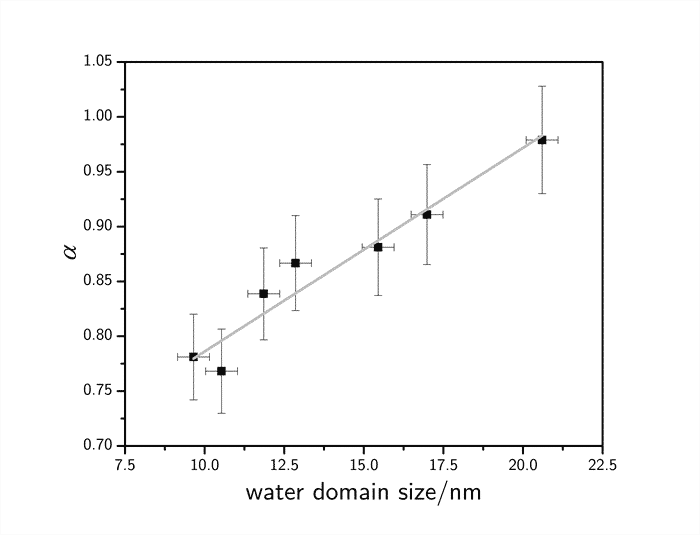The translational motion of particles in crowded environments, such as living cells or artificial membranes, can differ from the normal Fick type diffusion, where the mean square displacement grows linear in time, but is considered 'anomalous'. To establish a theoretical description and control processes inside these systems, an insight into the diffusive behavior of proteins or catalysts under confining conditions is crucial.
To resolve the dependence of the tracer particle diffusion on the confining environment (left figure), we studied the movement of a fluorescent particle (GFP+) in bicontinuous microemulsions via fluorescence correlation spectroscopy. The size of the confining sponge like network, which is mimics cellular environments, was tuned over a range of several nanometers by changing the composition of the microemulsion and characterized via small angle neutron scattering. The microemulsion slows down the translational movement of the tracer particles with decreasing domain size and changes the diffusiv behavior from 'Fickian' to 'anomalous' in a linear way (rightfigure). Therefore we conclude that the confinment of the protein is only due to the steric interaction with the surrounding microemulsion, which makes the use of this system to model intracellular crowding feasible.

